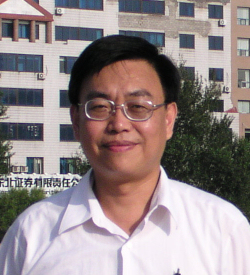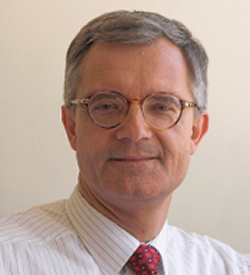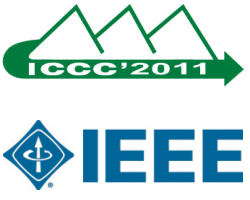Invited speakers

VLADIMÍR KUČERA, Czech Republic
Vladimir Kucera was born in Prague, Czechoslovakia in 1943. He studied at the Czech Technical University in Prague, where he obtained an Ing. degree in Electrical Engineering with distinction in 1966. He received the CSc. and DrSc. research degrees in Control Engineering from the Czechoslovak Academy of Sciences in 1970 and 1979, respectively. During 1970-1999, V. Kucera was a member of the Institute of Information Theory and Automation, one of the research institutes of the Academy of Sciences in Prague. He held various research and managerial positions, including Vice-Director (1986-1990) and Director (1990-1998) of the Institute. Since 1999, he has been a part time member of the Institute. Since 1992, he has been active at the Czech Technical University in Prague. During 1999-2000, he was Head of Control Engineering Department and during 2000-2006 he was Dean of the Faculty of Electrical Engineering. In 2007, he was appointed Director of the Masaryk Institute of Advanced Studies. The research interests of V. Kucera include control systems analysis and design. He contributed to the theory of Riccati equations and pioneered the use of polynomial equations in the design of control systems. His best result is the parameterization of all controllers that stabilize a given plant, known as the Youla-Kucera parameterization, which has become a new paradigm in robust and optimal control. He has been the Principal or Associated Investigator of 23 research projects with total support exceeding 750 M CZK. The industrial experience of V. Kucera includes the design of an adaptive controller for a rolling mill; the development of fast and precise servomechanisms; a cooperation with the Nippon Steel Corporation, Japan and the participation in European projects Dynamic Control and Management Systems in Manufacturing Processes, Advanced Methodologies and Tools for Manufacturing Systems, and Self-Learning Sheet Metal Forming System. Since 2000, he has been Head of Center for Applied Cybernetics, Czech Technical University in Prague. V. Kucera combines research with teaching. Since 1996 he has been a Professor of Engineering Cybernetics at Czech Technical University in Prague. He teaches graduate courses on systems and control. He has also given many courses at prestigious European, American, Asian, and Australian universities.
Polynomial Equation Approach to Control System Synthesis
Polynomial techniques have made important contributions to systems and control theory. Engineers in industry often find polynomial and frequency domain methods easier to use than state equation based techniques. Control theorists show that results obtained in isolation using either approach are in fact closely related.
Polynomial system description provides input-output models for linear systems with rational transfer functions. These models display two important system properties, namely poles and zeros, in a transparent manner. A performance specification in terms of polynomials is natural in many situations; see pole allocation techniques.
A specific control system design technique, called polynomial equation approach, was developed in the 1960s and 1970s. The distinguishing feature of this technique is a reduction of controller synthesis to a solution of linear polynomial equations of specific (Diophantine or Bézout) type.
In most cases, control systems are designed to be stable and to meet additional specifications, such as optimality and robustness. It is therefore natural to design the systems step by step: stabilization first, then the additional specifications each at a time. For this it is obviously necessary to have any and all solutions of the current step available before proceeding any further.
This motivates the need for a parameterization of all controllers that stabilize a given plant. In fact this result has become a key tool for the sequential design paradigm. The additional specifications are met by selecting an appropriate parameter. This is simple, systematic, and transparent. However, the strategy suffers from an excessive grow of the controller order.
The proposed lecture is a guided tour through the polynomial control system design. The origins of the parameterization of stabilizing controllers, called the Youla-Kučera parameterization, are explained. Standard results on reference tracking, disturbance elimination, pole placement, deadbeat control, H2 control, H? control, l1 control and robust stabilization are summarized. New and exciting applications of the Youla-Kučera parameterization are then discussed: stabilization subject to input constraints, output overshoot reduction, and fixed-order stabilizing controller design.
keynote presentation [pdf]

JENG-SHYANG PAN, Taiwan
Jeng-Shyang Pan received the B. S. degree in Electronic Engineering from the National Taiwan University of Science and Technology in 1986, the M. S. degree in Communication Engineering from the National Chiao Tung University, Taiwan in 1988, and the Ph.D. degree in Electrical Engineering from the University of Edinburgh, U.K. in 1996. Currently, he is a Professor in the Department of Electronic Engineering, National Kaohsiung University of Applied Sciences, Taiwan. He is also invited to be the Doctoral advisor both in University of South Australia and Harbin Institute of Technology. He has published more than 400 papers in which 110 papers are indexed by SCI. He is the IET Fellow, UK and the Tainan Chapter Chair of IEEE Signal Processing Society. He was Awarded Gold Prize in the International Micro Mechanisms Contest held in Tokyo, Japan in 2010. He was also awarded Gold Medal in the Pittsburgh Invention & New Product Exposition (INPEX). He was offered Thousand-Elite-Project in China. He is on the editorial board of International Journal of Innovative Computing, Information and Control, LNCS Transactions on Data Hiding and Multimedia Security, and Journal of Information Hiding and Multimedia Signal Processing. His current research interests include soft computing, robot vision and signal processing.
Intelligent Sensor Network
Wireless sensor networks consist of many sensor nodes that contain environmental sensing devices for movement, temperature, humidity, exhaust gas, and so on, which are distributed over an area to measure various characteristics of that region. Each sensor node also has limited wireless computational power to process and transfer the sensing live data to the base station or data collection center. Sensor node has a low level of power, and its battery power cannot be replenished. If the energy of a sensor node is exhausted, wireless sensor network leaks will appear, and failure nodes will not relay data to the other nodes during transmission processing. Thus, other sensor nodes will be increasingly burdened with transmission processing. Given these issues, energy consumption in wireless sensor networks is an important research issue. This talk will introduce some exiting algorithms for reducing the power consuming. How to apply the intelligent techniques for wireless sensor networks is also addressed.

ANDRZEJ BARTOSZEWICZ, Poland
Andrzej Bartoszewicz received the M.Sc. degree in 1987 and the Ph.D. degree in 1993 both from Technical University of Łódź, Poland. Then he obtained the degree of doktor habilitowany in control engineering and robotics from Academy of Mining and Metallurgy in Cracow, Poland. He was visiting scholar at Purdue University, West Lafayette, In., USA and at Strathclyde University, Glasgow, UK. Then for one year he was at University of Leicester, UK. Currently he is Professor at Technical University of Łódź, vice dean of Department of Electrical, Electronic, Computer and Control Engineering, head of Electric Drive and Industrial Automation Group and vice-director of Institute of Automatic Control. He has published three monographs and over 230 papers, primarily in the fields of sliding mode control and congestion control in data transmission networks.
Sliding mode control – fundamental concepts, recent trends and selected applications
The main purpose of control engineering is to steer the regulated plant in such a way that it operates in a required manner. The desirable performance of the plant should be obtained despite the unpredictable influence of the environment on all parts of the control system, including the plant itself, and no matter if the system designer knows precisely all the parameters of the plant. Even though the parameters may change with time, load and external circumstances, still the system should preserve its nominal properties and ensure the required behaviour of the plant. In other words, the principal objective of control engineering is to design systems which are robust with respect to external disturbances and modelling uncertainty. This objective may be very well achieved using the sliding mode technique which is the main subject of this paper.
The theory of variable structure systems (VSS) with sliding modes is currently one of the most significant research topics within the control engineering domain. Moreover, recently a number of important applications of the theory in the field of power electronics, electric drives, complex motion steering systems, robotics, etc. have also been reported. Therefore, this paper presents a brief tutorial introduction to the theory of sliding mode control (SMC), then points out the most important novel trends in fundamental research in this field and finally gives some examples of successful applications. Both continuous and discrete time sliding mode controllers are considered. Important new results on the reaching phase elimination, optimal time-varying and time-invariant sliding surface design, and control of time-delay systems (including communication networks and logistic supply chains) are discussed.

